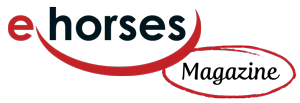Navicular disease: what is it and can it be treated?
“No foot, no horse.” Most horse owners learn this off by heart very soon after becoming involved in the horse world. The foot of the horse is complex and it’s important for every owner to know something about how it works. As well as the outer hard part of the hoof, inside the hoof there are sensitive laminae, structures which look like a bit like interwoven leaves. This mass of nerves and blood vessels is key to keeping the horse’s foot healthy and supporting the leg.
Inside the foot and pastern (the lowest part of the horse’s leg) there is also a group of structures consisting of the navicular bone, the deep flexor tendon and the navicular, or horseshoe bursa. The interaction between these bones and tendons keeps the horse moving. The bursa, which is a fluid-filled capsule a bit like a tiny cushion, acts as a shock absorber. If these structures are damaged or stressed, it can cause severe lameness. This is known as equine podotrochlosis syndrome, generally called navicular disease.
Why do horses suffer from navicular disease?
Almost one-third of all lameness in the forelimb of the horse is due to this unpleasant condition. Different factors including poor conformation, incorrect shoeing or trimming and concussion through hard riding or riding on hard surfaces may be the cause. It’s also been suggested that poor nutrition, especially when the horse is young, can be a factor. However, there is still much that is unknown about the condition, which can be extremely serious.
What research does show is that certain breeds are more susceptible to the condition, and they tend to be the horse breeds that are involved in high impact sporting activities which involve either jumping or sharp turns and stops. Unsurprisingly, the syndrome is often seen in Quarter Horses, Warmbloods and Thoroughbreds. It can appear at any time but tends to begin from the age of four onwards. The navicular structures become inflamed and the syndrome can often be seen in conjunction with osteo-arthritic conditions. Horses with long toes and low heels are also more susceptible. It’s not a disease that’s seen in wild or feral horses.
Diagnosis and treatment
If a horse goes persistently lame in both front legs, is moving from foot to foot to ease the pain and doesn’t want to turn or walk on hard surfaces, then navicular may be the cause. Vets may ask the horse to be walked in a tight circle in order to confirm the disease. Diagnosing the syndrome properly often needs specialist equipment.
The vet may take images of the whole foot either by conventional X-rays, magnetic resonance imaging (MRI) scans or by taking a bursogram, which involves injecting the bursa with dye and then illuminating it using radiograms to reveal the condition of the deep flexor tendon, the navicular bone and the bursal sac itself. The vet will almost certainly use standard flexion tests in addition to the imaging.
Navicular disease: no cure, but reasons to hope
While there is no cure for equine podotrochlosis syndrome, much can be done to alleviate the condition. Various types of remedial shoeing, including the use of pads under shoes to encourage the horse to keep moving, are available. As this is a very painful disease, it’s easy for horses to move little and gain weight, which exacerbates the condition. Encouraging the horse to take gentle exercise is very important. Avoiding lungeing and using appropriate pain alleviation can also form part of the management programme. Horses are likely to prefer to exercise on soft surfaces.
Shock wave therapy and the use of nonsteroidal anti-inflammatory drugs are both established ways to manage navicular disease. During shock wave therapy, the damaged area receives sound waves of high intensity which relieve the pain. Pain-killing drugs that can target the navicular structures are available too. Neurectomies, nerve-cutting operations which can relieve the pain for several years, can be performed very successfully. This is a significant intervention not to be used lightly, however. Often with the right combination of therapies, horses can continue to live active, pain-free lives.
